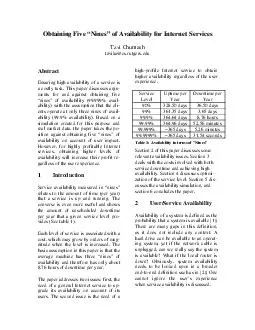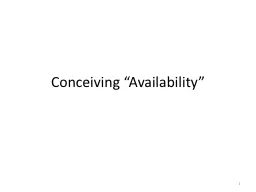PDF-Obtaining Five Nines of Availability for Internet Services Tzvi Chumash tzvikacs
Author : ellena-manuel | Published Date : 2014-12-12
rutgersedu Abstract Ensuring high availability of a service is a costly task This paper discusses argu ments for and against obtaining five nines of availability
Presentation Embed Code
Download Presentation
Download Presentation The PPT/PDF document "Obtaining Five Nines of Availability fo..." is the property of its rightful owner. Permission is granted to download and print the materials on this website for personal, non-commercial use only, and to display it on your personal computer provided you do not modify the materials and that you retain all copyright notices contained in the materials. By downloading content from our website, you accept the terms of this agreement.
Obtaining Five Nines of Availability for Internet Services Tzvi Chumash tzvikacs: Transcript
Download Rules Of Document
"Obtaining Five Nines of Availability for Internet Services Tzvi Chumash tzvikacs"The content belongs to its owner. You may download and print it for personal use, without modification, and keep all copyright notices. By downloading, you agree to these terms.
Related Documents














